Yes. Insurance for a single day is available.
Your Ultimate Guide to Renting a Car in Spain
PUBLISHED ON Feb, 21 2024

Setting the Scene for Spanish Adventures
Why Renting a Car Elevates Your Spain Experience
Renting a car in Spain isn’t just about going from Point A to B; it’s about the experiences and freedoms that come along for the ride. Imagine weaving through the countryside with complete autonomy, choosing your own destinations and schedules. A car rental in Spain is your ticket to unplanned explorations, quaint village discoveries, and the ability to indulge in local culture at your own pace.
The Varied Landscapes and Road Trips in Spain
Spain’s landscapes are like a palette of diverse topography waiting to be explored. With a rental car, embark on a voyage through the snow-capped peaks of the Sierra Nevada, cruise along the rugged coastline of Costa Brava, or traverse the undulating olive groves of Andalusia. The country’s excellent roads make these transitions seamless, allowing you to experience the rich tapestry of climates and vistas on offer.

Spain open road
Preparing for Your Journey
Booking Tips for the Best Rental Deals
To snag the best deals on car rentals in Spain, here are some pro-tips:
- Book Early: Prices tend to climb as your travel date approaches. Secure your vehicle as soon as your plans are firm.
- Location Matters: Picking up and dropping off at the same location can save you fees. On the other hand, rental car price for airport car rental is higher.
- Size and Duration: Consider smaller cars for lower rates and check if weekly rentals offer discounts compared to daily rates.
- Timing: Align pick-up and drop-off times with your actual travel schedule to avoid extra day charges.
- Cancellation Policy: Look for rentals that offer free cancellation or those with a reasonable fee for added flexibility.
- Price Alerts: Set these up to monitor any favorable changes in rental rates.
Selecting a car rental company should prioritize comfort, reliability, and value, akin to picking the perfect pair of shoes for a long walk. So, while cheap car rentals might be tempting, focus on selecting a provider with a solid reputation and trusted service, as this is how car rental companies operate.
Among the many car rental companies in Italy, some are more recommended than others. Most car rental companies, such as Avis, Europcar, Hertz, and Sixt, have car rental locations throughout the country and offer competitive Italy car rental rates, making them perfect for Italy renting.
However, some companies like Goldcar and ClickRent have mixed reviews and should be considered with caution.
Remember, the market fluctuates, so use a trusted service that provides clear pricing and options adaptable to your needs.
Required Documentation for Car Hire
Before you set off on your Spanish road trip, make sure you have the necessary documents:
- Driver’s License: A valid license from your home country is essential.
- International Driving Permit (IDP): Non-EU license holders need this alongside their regular license.
- Credit Card: The card must be in the name of the primary driver to secure the rental deposit.
- Identification: A valid passport is required for the main driver.
- Rental Confirmation: Have a hard copy or digital version of your booking voucher for reference.
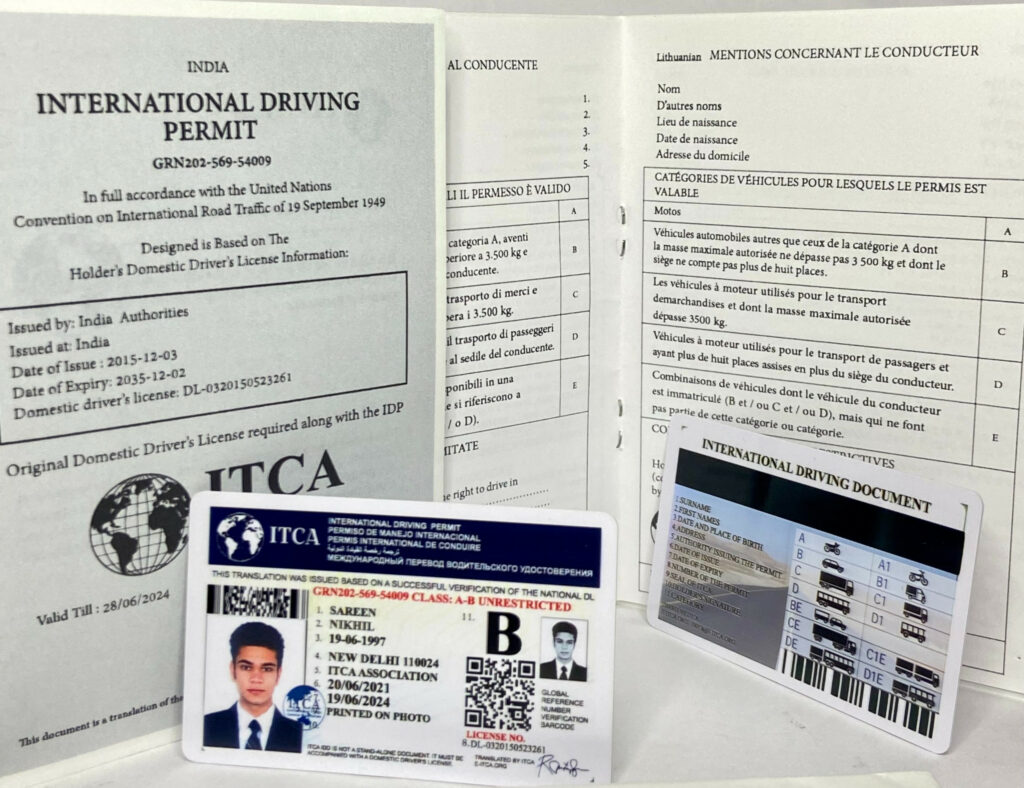
International Driving Permit
Make sure all drivers’ names are on the rental agreement. Keep these documents easily accessible throughout your journey.
Picking the Perfect Vehicle
Navigating Vehicle Choices: From Compact to SUV
Choosing the right vehicle for your Spanish adventure depends on your itinerary, number of passengers, and personal preferences. Here’s a snapshot of your options:
- Compact Cars: Ideal for solo travelers or couples; agile for city streets and easy to park.
- Sedans: More comfort and space, suitable for small families or longer journeys.
- SUVs: Perfect for groups with luggage, providing stability and comfort over varied terrain.
- Vans: If you’re traveling in a big party or need extra space, a van ensures nobody’s left behind.
- Convertibles: For sun-seekers wanting to enjoy the Mediterranean breeze in style.
Factor in car size, fuel efficiency, and comfort when making your choice. Keep in mind that compact cars are easier for narrow urban roads, while SUVs and vans are better for countryside explorations.
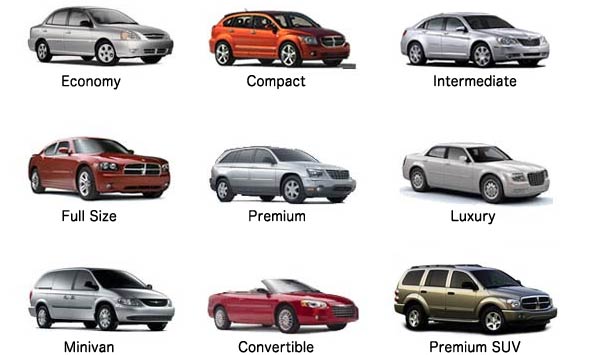
Various vehicle types in Spanish rental locations
Remember, the vehicle you choose should align with your planned activities, while also allowing for spontaneity on the open road.
Considering Automatic vs Manual Transmission Options
When it comes to transmission, the choice between automatic and manual can greatly impact your driving comfort, especially in Spain where manual cars are more common. Here are important considerations:
- Availability: Automatic cars are less frequent and more sought after, so booking in advance is crucial.
- Cost: Expect to pay a premium for automatic vehicles due to higher demand and limited supply.
- Comfort: If you’re not accustomed to stick-shift driving, an automatic will provide a more relaxed experience.
- Terrain: Automatics simplify driving in hilly areas and heavy traffic, common in Spanish cities.
To find the best option, use online filters on rental websites to narrow down your search. And always double-check the car’s transmission before confirming your booking to avoid surprises upon arrival.

Automatic vs Manual Transmition
Reserving an automatic early on not only guarantees the convenience but also gives you a wider choice of models to select from for your Spanish road trip.
Understanding the Rules of Spanish Roads
Speed Limits and Traffic Laws to Keep in Mind
While driving in Spain, it’s crucial to respect the laid-out speed limits and traffic regulations to ensure a safe and law-abiding journey. Here’s a quick rundown:
- Speed Limits: The national speed limit is 120 km/h on autopistas (freeways), 100 km/h on multi-lane roads, and 90 km/h on ordinary roads. Always watch for local signage as these can vary, especially in urban areas or during road works.
- Compulsory Minimum Speeds: Some roads display minimum speed requirements to keep traffic flowing smoothly. Look for blue and white signs indicating this lower limit.
- Traffic Fines: Pay close attention to speed and traffic laws to avoid on-the-spot fines, which you can often settle at a reduced rate if paid quickly.
- BUS-VAO Lanes: Know that special lanes in cities like Madrid and Barcelona are reserved for buses, motorcycles, and high occupancy vehicles only.
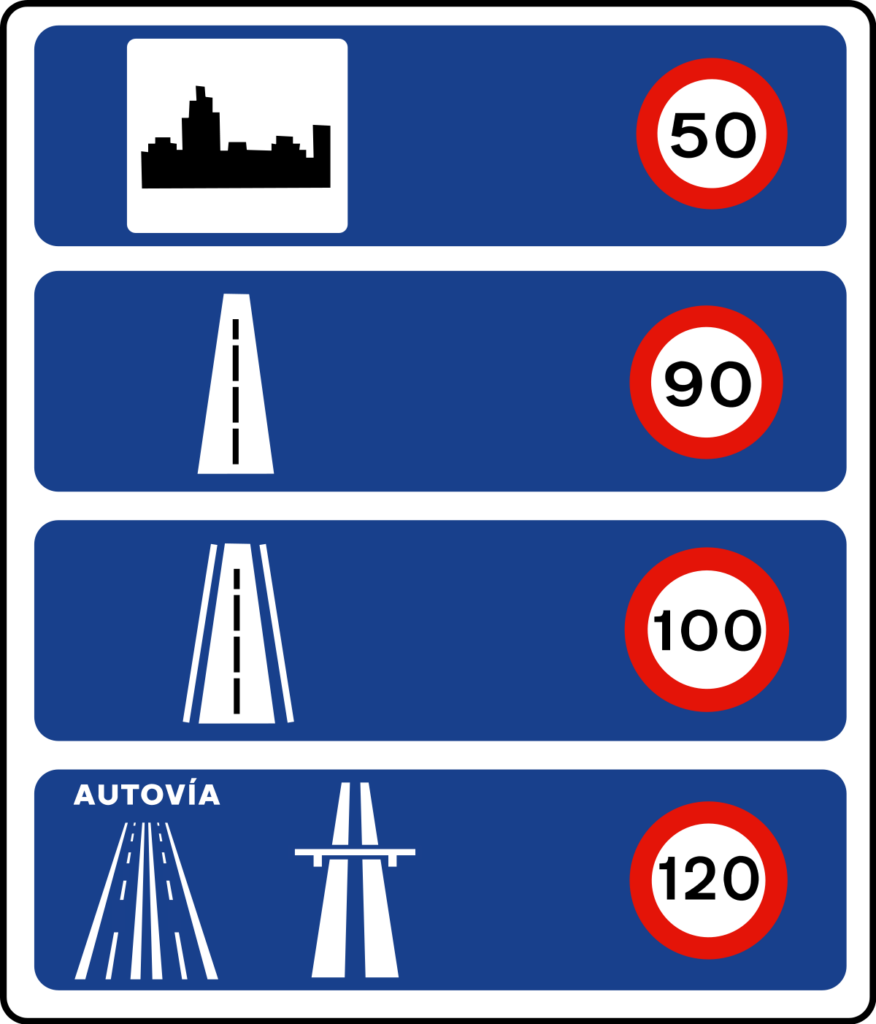
Speed limits in Spain
Keep in mind, when the controls are in place for road works, you must adhere to the temporary signs, which often enforce lower speed limits to ensure workers’ safety. Familiarizing yourself with these particulars can lead to a more relaxed driving experience. [Insert road sign examples and summary of speed limit regulations]
Remember, these rules are designed to keep everyone safe on Spain’s thoroughfares, so adhering to them not only keeps you compliant but also contributes to a pleasant driving environment for all.
Tackling Tolls and Parking in Cities
Driving in Spain can sometimes mean dealing with toll roads and the challenge of finding parking, especially in the bustling urban areas. Let’s break down what you need to know.
Tackling Tolls:
- Autopistas (AP): These are toll highways where you can pay with cash or credit card.
- ‘Vía-T’ System: You can rent or buy a transponder that lets you pass through toll booths seamlessly.
- Cost: Tolls vary; check online calculators or apps beforehand for estimated fees.

Spain toll roads map
Parking in Cities:
- Blue Zones: Pay for street parking as marked by blue lines, using nearby machines.
- Resident Areas: Marked green or with ‘P’ signs, these spots are off-limits to visitors.
- Free Parking: Often available on national holidays, Sundays, and after 7 PM.
- Alternative Parking: Consider outskirts parking and use public transportation.
Be aware of the ‘bump parking’ method locals use in cramped street spots. To minimize theft risks, remove valuables from your car whenever parked.
Remember, it’s best to have a mix of cash and card for tolls and to approach urban parking with patience and awareness of local customs to keep your car rental experience smooth.
Additional Considerations for Smooth Travels
Insurance, Excesses, and Waivers Explained
Understanding insurance terms is crucial for peace of mind on your Spanish road trip. Here’s a breakdown to help you navigate the ins and outs:
- Collision Damage Waiver (CDW): Limits your financial responsibility for damage to the rental car, often included with a deductible or ‘excess.’ The basic CDW does not typically cover certain types of damage, like windscreens, tyre punctures, or undercarriage damage. That’s where Super Collision Damage Waiver (SCDW) comes to reduce the excess. If you want more comprehensive coverage, Full Protection packages can offer savings by bundling Excess Waiver, Roadside Assistance, and zero deductible excess.
- Theft Protection (TP): Protects you from paying the full cost if the rental car gets stolen, usually up to the deductible amount.
- Third Party Liability (TPL): Covers damages to other vehicles, property, or medical expenses in case you’re responsible for an accident. In Spain, rentals come with mandatory third-party liability insurance, which means you’re covered against damages to others by default.
To reduce the excess further, consider purchasing additional car rental insurance for Spain.
Compare and Buy Car Rental Insurance in Spain
Get StartedWhile SCDW may double your rental cost, CarInsuRent’s car rental insurance for Spain stands out as a favorable choice for several reasons:
- Comprehensive Coverage: CarInsuRent offers extensive coverage for car hire excess, providing you peace of mind. This insurance covers expenses related to windscreen damage, theft, misfuelling, breakdown, and towing, up to a generous limit of US$ 4,500.
- Cost Savings: By opting for CarInsuRent’s Car Hire Excess Insurance, you can avoid overpaying at car hire desks abroad. Booking this insurance online before traveling ensures competitive rates and helps save money in comparison to purchasing excess coverage directly from rental companies.
- Ease of Booking: The process of booking our Car Hire Excess Insurance is straightforward and can be conveniently completed online before embarking on the trip. This simplicity ensures a hassle-free experience for you, allowing you to focus on enjoying their journey.
- Positive Reviews: CarInsuRent’s Car Hire Excess Insurance has garnered positive reviews from satisfied customers, highlighting its reliability and effectiveness in providing coverage during car rentals abroad. Such testimonials from previous users attest to the quality and value of this insurance option.
Fabulous service. There was some damage to the car, which the rental company claimed was my fault, which I totally refuted. Following a few e-mails between them and myself, they decided to charge my credit card for the damage, and I had no option but to pay. I opened a claim at CarInsuRent, and within a few days they reimbursed me the whole amount.
Rental Car Insurance in Spain Comparison: CarInsuRent vs. Cost at Counter
We compared and analyzed Super Collision Damage Waiver costs for a 7-day rental of a standard car class (July 1st – July 7th). The car rental insurance rates listed here are subject to change by the car rental companies without notice. For the most up-to-date pricing information, we encourage you to request a free online quote prior to booking. CarInsuRent’s car hire excess protection for rental vehicles in Spain offers the same coverage at a 70% lower cost!
| Car Rental Company | Collision Damage Waiver (CDW) + Theft Protection (TP) | Avg. Super Collision Damage Waiver Cost at Counter* | Avg. Insurance Deductible at Counter* | Avg. Cost for Rental Car Excess Insurance with CarInsuRent | Cost of Deductible with Zero-Excess from CarInsuRent |
| Avis | Included at the rental price | € 34.47 | € 2,420 | US$ 6.49 per day or US$ 94.90 for annual coverage | $0 USD |
| Budget | Included at the rental price | € 24.00 | € 3,150 | US$ 6.49 per day or US$ 94.90 for annual coverage | $0 USD |
| Enterprise | € 19.55 | € 27.16 | € 1,200 | US$ 6.49 per day or US$ 94.90 for annual coverage | $0 USD |
| Europcar | Included at the rental price | € 34.40 | € 1,147 | US$ 6.49 per day or US$ 94.90 for annual coverage | $0 USD |
| Hertz | Included at the rental price | € 41.14 | € 2,000 | US$ 6.49 per day or US$ 94.90 for annual coverage | $0 USD |
| Sixt | AUD$ 31.35 per day | € 31.33 | € 1,200 | US$ 6.49 per day or US$ 94.90 for annual coverage | $0 USD |
Seasonal Advice and Driving During Different Weather Conditions
Driving in Spain can be joyous any time of the year, yet each season brings its nuances, especially for car rentals:
- Summer: High temperatures may affect your car’s performance. Ensure the vehicle’s air conditioning works and always have water on hand.
- Autumn: Watch for wet leaves or early frosts on the roads, particularly in northern regions.
- Winter: In mountain areas like the Pyrenees, snow chains or winter tires might be necessary. Always check the local weather forecast for snowfall or icy conditions.
- Spring: With the melting snow and occasional showers, be cautious of slippery roads and ensure your rental car has good tread on the tires.
Always ask your rental agency about seasonal equipment like snow chains or ask for a vehicle with winter tires if driving into the mountains during winter. Keeping abreast of local weather advisories ensures you stay safe regardless of Spain’s varied climates.
Practical Tips for Car Pickup and Return
Inspecting Your Rental Car Before Departure
To avoid any potential headaches with your rental car company upon return, thorough inspection before you hit the road is key. Here’s a checklist for your peace of mind:
- Exterior: Scan the entire car for dents, scratches, and any other damage. Remember to check less visible areas, including the roof, under the bumper, and behind mirrors.
- Interior: Look for any damages or stains inside the car that could be charged to you later.
- Tires & Fender: Ensure the tires, including the spare, are in good condition and check for any damage to the fenders.
- Gas Level and Mileage: Verify that the gas level and mileage match the records provided.
Be diligent about documenting any discrepancies and ensure they are noted in your rental agreement. Taking photographs or videos before heading out can be an extra precaution.
Finally, if you’re traveling to colder regions in the winter, double-check for the presence of winter tires or snow chains. This can save you from potential hazards and added stress during your travels.
The Process of Returning Your Car Without Hassles
The return process is a crucial endpoint to your car rental experience in Spain. Follow these steps to ensure it’s smooth and hassle-free:
- Timeliness: Plan to return your car at or before the agreed-upon time to avoid late fees.
- Fill Up: Refuel the car according to your rental agreement’s terms to prevent additional charges.
- Inspection: Conduct a quick inspection upon arrival at the drop-off point. Be present if an agent inspects the car.
- Documentation: Have your rental agreement and any inspection documents ready to hand over.
- Extra Equipment: Make sure all additional rental items like GPS or child seats are returned with the vehicle.
If you need to return the car outside of business hours, ensure you understand the company’s process, such as where to leave the keys and vehicle. And as always, take photos of the car’s condition as proof of return without new damage.
Remember, clear communication with your rental agency about their policies can help prevent unexpected charges, so you can wrap up your Spanish journey with ease.
Maximizing Your Driving Pleasure in Spain
Top Scenic Drives and Must-Visit Destinations
Spain is crisscrossed with routes that offer breathtaking views and cultural experiences. Here are top recommendations for scenic drives and destinations that should be on your radar:
- The Basque Circuit: Drive through the green hills of the Basque Country and enjoy the coastline vistas.
- Costa Brava Cruising: Revel in the rugged shoreline and visit the charming coastal towns and beaches.
- The Andalusian Adventure: Wind through the rolling olive groves and white villages, and don’t miss the historical cities of Seville, Granada, and Cordoba.
- Route of the Monasteries: In Catalonia, a journey connecting ancient monasteries is also a spiritual experience.
- The Silver Route: Travelling from north to south, this ancient trade route passes through historical and scenic landmarks.
Each of these drives offers a unique blend of scenery, local cuisine, and history. Remember to pack a good camera and leave enough time to embrace the spontaneous stops that make road trips memorable.

Costa Brava Shore
A car gives you the freedom to fully immerse yourself in these locales, be it the art, architecture, or the pure pleasure of the open road.
Fuel, Rest Stops, and On-the-Road Resources
Managing fuel and taking breaks are parts of the journey you’ll want to handle with ease. Here’s what you should know to keep your trip smooth:
- Fuel: In Spain, ‘estación de servicio’ (service station) is where you’ll refuel. Remember, petrol is typically at the green pump, labeled “gasolina,” and diesel at the black pump, marked “gasoil.” A tip for rental cars: aim to return the car with the same amount of fuel to avoid extra charges.
- Economic Choice: If covering long distances, consider diesel vehicles for better economy, as diesel is cheaper than gasoline in Spain.
- Rest Stops: Motorways have many rest areas where you can take a break, use facilities, get a meal, or refresh with coffee.
- On-the-Road Resources: For electric cars, research charging station locations. Most fuel stations will have multiple fuel types and services but if you’re driving an LPG-powered vehicle, confirm availability ahead of time.
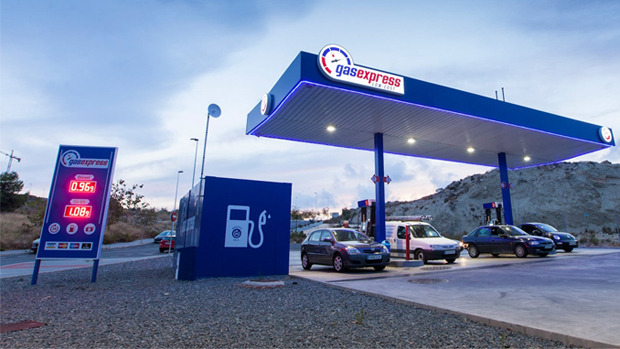
Low cost fuel stations in Spain
Staying informed about these resources can help you plan ahead for a stress-free drive through Spain’s captivating landscapes.
FAQs about Renting a Car in Spain
How far in advance should I book my rental car in Spain?
For the best selection and rates, it’s advised to book your rental car in Spain as early as possible, especially during the busy summer months. Aim to reserve your vehicle once your travel dates are confirmed.
What do I need to know about driving etiquettes in Spanish towns?
In Spanish towns, be respectful of pedestrians, adhere to speed limits, and know that honking excessively can lead to fines. Also, expect tight parking spaces and embrace patience, as local driving styles may differ from what you’re used to.
Is it safe to drive in Spain, especially as a tourist?
Yes, driving in Spain is generally considered safe for tourists. The roads are well-maintained, and most drivers are courteous and abide by the rules. Just ensure you understand local traffic laws for a secure trip.
Are there hidden costs when renting a car in Spain?
While not exactly hidden, costs like fuel policies, additional driver fees, or optional insurances can add up. Be sure to read the rental agreement thoroughly to avoid surprises.
Travel Tips and Guides
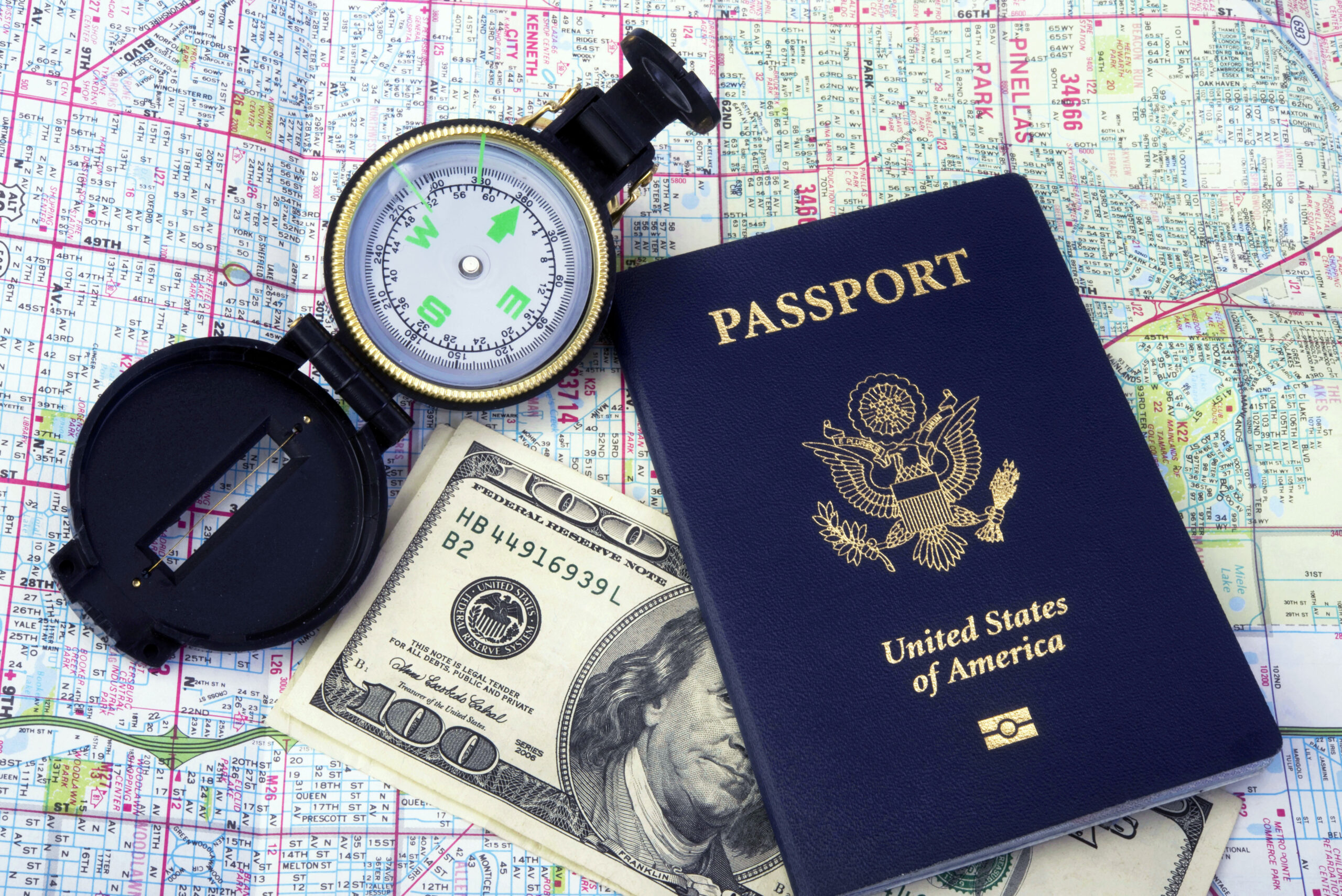
Navigate the World: How to Get Your AAA's International Driving Permit Effortlessly
Gil Farkash

Top Tips for Stress-Free Renting a Car in USA: Your Ultimate Road Trip Guide
Gil Farkash

Essential Tips for Renting a Car in UK: Your Complete Guide
Gil Farkash
Frequently Asked Questions (FAQ)
No. We provide a single journey plan. You are covered from the time you pick up the rental car up to the time you return it or on the last date written on your Certificate of Insurance, whichever comes first.
No. You should purchase a policy before starting your travel.
Find the answers you’re looking for to the most frequently asked car hire insurance questions as well as other questions relating to our products and services.
